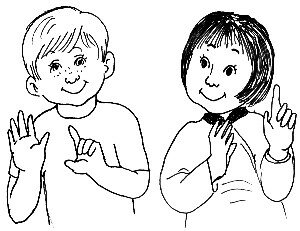STRANGE BUT TRUE- Base ten: Not everybody counts the same

Q. How do speakers of English and other European languages count differently from speakers of Chinese, Japanese, Korean? Aren't the number systems the same? –C. Babbage
A. The base-10 system is the same but not the counting words, says Peter Gray in Psychology. After 10 we say "11, 12, 13... 20, 21..." whereas speakers of Asian languages say (if their words were translated literally) "ten-one, ten-two, ten- three... two-tens, two-tens-one..."
The words eleven and twelve give no clue to how they fit into the base-10 system, but ten-one and ten-two make this immediately clear to the Asian child. "Even many English-speaking adults do not know that teen means 10, and children do not automatically think of 20 as two 10s."
Is this why six-year-olds in the U.S., France and Sweden, by one study, are slower at basic arithmetic tasks than their Asian counterparts? U.S. kids showed they learn to count to 10 as early as Chinese kids, but after 10 it's no contest: "By age four, most of the Chinese children studied could count to 40 or beyond, but most of the American children could not get past the low teens." Ask yourself: Wouldn't you (as a child) rather try to cope with "three-tens-four minus ten-two" than "thirty-four minus twelve"? This is two-tens-two. Count on it.
Q. Just turn on your TV set to witness the ghostly emanations of a long, long ago rather hallowed event, a chapter of cosmic creation. Do you know what time, what channel? –G. Gallup
A. Any time you tune to a channel not used by your local cable company or network affiliates and see "snow" on the screen will do, say Vern Ostdiek and Donald Bord in Inquiry into Physics. The snow– if you can believe it– is partly due to microwave radiation left over from the fiery explosion of space and time some 15-20 billion years ago, the formation of the universe popularly known as the "Big Bang." This radiation is picked up by your set as "noise."
Even before this cosmic background radiation was first identified– by Arno Penzias and Robert Wilson in 1965, earning them a Nobel Prize– as the "smoking gun" evidence for a "moment of creation," astronomer Fred Hoyle (1950) had derisively dubbed it the "Big Bang." The name stuck. Then in 1993, Sky and Telescope magazine held a name-replacement contest, with Carl Sagan, Hugh Downs, and writer Timothy Ferris as judges. After reviewing 13,000+ submissions, the committee concluded: big bang bested the rest.
Q. When you take time to help someone, incurring maybe even cost or risk, why do you do this? What does psychology say? a) It's basically selfish, to make yourself feel good; b) It's evolutionary, as you foster the genes of your kin or kindred spirits; c) It's tit-for-tat, with you helping others now in hopes of being helped later; d) It flows out of the goodness of your heart; e) It's all of the above. –G. Samaritan
A. You'd have to mark "e," stressing the continued mysteries of human motivation. And maybe not just human– a gorilla named Binti a few years ago rescued a three-year-old boy who had fallen into the pit, giving him over to zookeepers.
Then there's the story about Abraham Lincoln stopping his coach to rescue drowning piglets by the road, recounts Elliot Aronson in Social Psychology. When his companion praised his generosity, Abe replied, "Why, bless your soul, Ed. But that was the essence of selfishness. I should have had no peace of mind had I just gone on."
More selfless are the acts of courage by "everyday" people like pilots who with their last breaths steer a failed craft to miss crowded buildings. Already giving themselves up for dead, they continue to think of others. Why? Truly fascinating it is that a century after Freud, no single theory–evolutionary, social exchange, empathy– altruism– satisfactorily explains such exemplary deeds.
Q. Some of Shakespeare's plays, it was claimed, were actually authored by contemporary Francis Bacon. How did stylometry or stylostatistics settle this old question? –J. Sobran
A. Word frequency analysis showed "significant difference" between the two writers, says David Crystal in The Cambridge Encyclopedia of the English Language. One method is to list the 50 commonest words in all available texts of each author, then to compare the results. You might think an author's unusual pet words would be the tipoff, but frequency of bread-and-butter words like "to" and "with" are generally more revealing, says Erica Klarreich in Bookish Math in Science News Online.
These frequencies are unconscious and so make good literary "fingerprints." For instance, in a famous dispute over whether Alexander Hamilton or James Madison wrote certain of the Federalist Papers, analysts studied the men's other writings and found Hamilton used the word "upon" about 10 times as often as Madison.
"They assigned all 12 papers to Madison, concurring with the historians' prevailing view." When novels by Jane Austen and Henry James were compared, the number of he's and him's stood out in James' work, says Crystal, they's and them's in Austen's. James was also fond of using the indefinite article "a" and "an."
Generally, paired words are also clues, as is grammatical structure, says Klarreich, but for anyone worried over having a note or letter stylo-traced, just keep it under 1,000 words to stay comfortably anonymous.
Send Strange questions to brothers Bill and Rich at [email protected].
#